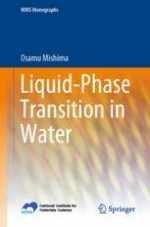2021 | Buch
Über dieses Buch
A profound secret of nature hidden in ice water in a glass cup is revealed in this book. The author teaches a simple method for understanding the complex properties of water through the concept of polyamorphism. Polyamorphism is the existence of two kinds of liquid water, leading to a discontinuous transition between them. Currently, this two-water scenario is controversial in the scientific community because definitive experimental proof is difficult. However, a growing number of researchers believe there is adequate circumstantial evidence for the scenario. This introductory book focuses experimental thermodynamic data of liquid water, supercooled water, and amorphous solid water at various pressures and temperatures, and demonstrates how the two-water scenario initially evolved experimentally. The book explains the importance of polyamorphism in comprehending liquid water.
Anzeige
